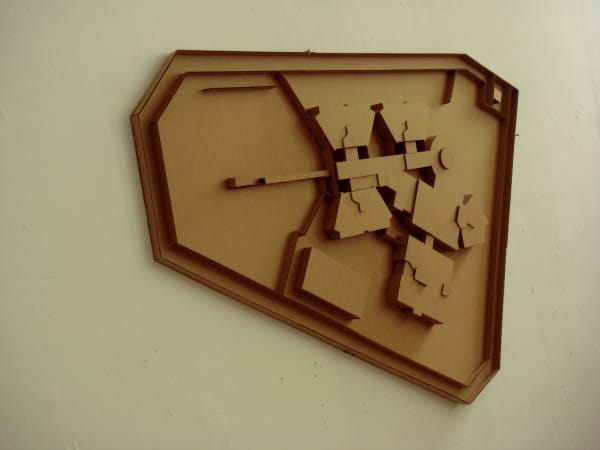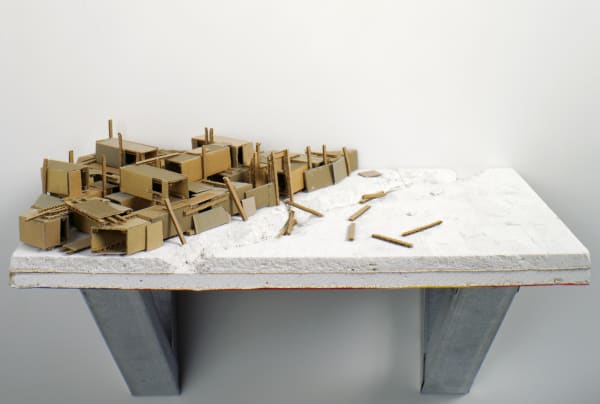Michael Ashkin
The Name:
"Adjnabistan" is the name of the anti-nationality I invented with a friend while traveling through Iran in 1978 during the last months of the Shah's reign. Derived from the Arabic/Farsi "adjnabi" ("foreigner," "stranger," or "other"), this land of impossible origin proved useful since as an American one needed to avoid treacherous political discussions. If said with the proper lightness of tone, "Adjnabistan" could provoke a smile or even be accepted without question. In any event, I could not be accused of falsehood or insincerity, since the more I used this word, the more its inherent alienation seemed appropriate to the situation. As I traveled I developed mental images of this imaginary land and though they shifted as in a dream, they empathetically incorporated the political and economic distress evident in the landscapes through which we passed.
The Project:
Recently, I decided to revive the idea of Adjnabistan in order to encourage its utopian possibilities. For me, Adjnabistan begins as a process of thinking and speculation not tied to a specific physical manifestation. If for a time it assumes sculptural form, this is only to establish a preliminary relation to the material world -- Adjnabistan aspires, finally, to overcome the limitations of art. Its future lies in the reintegration of art, politics, ethics, philosophy, technology and daily life when the separations implied in its name, Adjnabistan, become meaningless and disappear.
The First Stage:
The first experiment involved an urban model functioning as a three-dimensional drawing. As a basis of working, I acknowledged and attempted to offset two related and oppressive qualities of utopian thought: first, that the logic of spatial organization is political and is based on exclusion as much as inclusion; second, that utopian projects develop an idealist space at the expense of the material reality. The project thus became a dialectical thinking through of the conflict that exists between imaginary models of societal perfectibility and the structural limits of reality. To illustrate the extreme version of the schism between ideas and means, I imagined Adjnabistan as a community at the far end of exclusion, i.e., as a squatter/refugee/concentration camp built from used or abandoned shipping containers, situated in a fringe wasteland. I cast them in the form of a miniature urban model (made from cardboard on a sheetrock base) in order to give material form to my imaginings and register historical evidence. This model was treated as ongoing and could be in theory be endlessly modified. (The small piece exhibited here is a study for that larger model.) The project developed accordingly, with three forces asserting themselves: the inhabitants' hopes and aspirations; the social, political, and economic constraints they encountered; and finally, my own conflicting interests and desires. As the process unfolded, fences were built, torn down and rebuilt to new purpose. Watch towers became guard towers. Family compounds became prisons. Structures too grandiose were dismantled and scavenged. The town underwent cycles of overflow and attrition. Populations thrived, perished or set themselves adrift in the surrounding desert.
The Flag:
The flag included here is only one possibility and was made from the most readily available material (in this case, a black plastic garbage bag). It contains a rectangular opening in the shape of a negative sign, shipping container, or holding cell window. The opening renders the flag (and Adjnabistan) incomplete, transforming it from a static signifier of the ideal to a framework for the conflict between this ideal and the material world that surrounds it.
Michael Ashkin, 2005

![Michael Ashkin_Untitled (where the toll for dreaming is exacted daily upon awakening). [an abridged title, the first of twenty-one lines] (detail) 2008](https://artlogic-res.cloudinary.com/w_600,c_limit,f_auto,fl_lossy,q_auto/ws-ernahecey/usr/images/artworks/main_image/items/ae/ae87ec77a9bf4d328baa62a69a59536b/market-forces_michael-ashkin_2.jpg)



